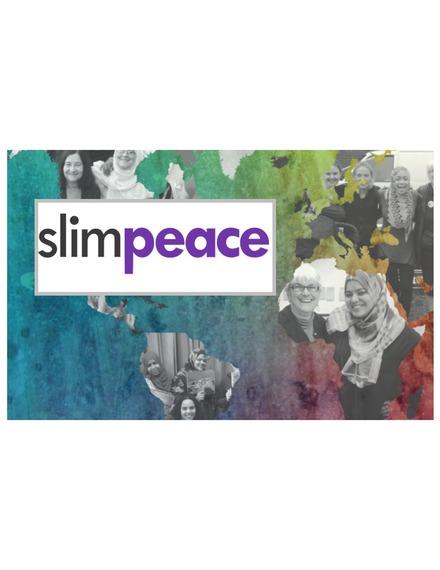A History
Slim Peace grew out of a documentary film to become an internationally acclaimed non profit organization. In 2007, Slim Peace founder and filmmaker Yael Luttwak created the first Slim Peace group as the subject of her documentary film, A Slim Peace in Jerusalem. The premise of the film was simple: bring Palestinian, Israeli and women who would normally never meet together to lose weight, be healthy and build bridges. Its premiere at the Tribeca Film Festival and broadcast on the Sundance channel led to an unexpected and amazing epilogue.
Word began to spread and within 5 years we had held 20 cohorts in the Middle East and impacted over 350 women. 2013 was the year of international growth. Slim Peace crossed the Atlantic with its proven curriculum and implemented it in two groups in Boston that were profiled in the New York Times and on NBC's Today Show. Interest from over 15 cities to start Slim Peace in their communities soon followed. Slim Peace's headquarters in Washington D.C., recently launched a university cohort for the first time. George Mason University's myriad of international students and organizations welcomed the unique program with interest and curiosity, providing both the outstanding staff leaders and over half of the participants.
Now seven years since its film debut, the 25th Slim Peace cohort will be launching next week, in Portland, Maine with women from the Sub-Saharan Africa community joining local Jewish and Christian Portlandians (Maine not Oregon!) together in a 10-week journey. This will be a pivotal chapter in the life of Slim Peace- where we will witness female empowerment, health education and interfaith dialogue within a new diaspora population.
Changes in the Capital
As a participant in the D.C. cohort, I witnessed the mental schemas of health, cultures and faith change in every woman. During the program, the walls of trepidation broke down week by week to reveal a space with no judgment or restrictions. There were many "a-ha" moments where epiphanous "lightbulbs" would spark in response to stories or lessons. It illustrates that the curriculum model and the program structure are not focused exclusively on the interfaith dynamics of the Middle East, but are relevant to the breadth of Judaism and Islam and building bridges right here in the United States.
Early on in the program, I shared my grandfather's story of leaving his home, belongings and family members in Palestine in late '47 in response to the increased violence and conflict in the region. Our group leader and Jewish dietitian, Dr. Berkow, shared, "I eagerly embraced the opportunity to serve as a facilitator for Slim Peace, but unexpectedly took my own personal religious journey along the way. My relationship with Judaism has been distant, at best. Through my experience at Slim Peace I re-examined not only this relationship but how I connected to Israel and the struggle in the Middle East." This is what makes Slim Peace work -- personalizing the idea of another faith or culture that may have once seemed complicated, distant or reticular. Women develop interfaith relationships with "the other" which is the key to unlocking preconceptions.
Thanks to the program, I am more knowledgeable about Judaism and Islam. The nonjudgmental atmosphere of the group fostered my ability to ask questions without feeling naive or ignorant. It was refreshing that I didn't need to rely on questionable internet sources or hefty textbooks... the best sources were sitting right next to me. I've always had an open mind, having been raised under a sturdy roof of tolerance and diverse interaction, with plenty of Jewish and Muslim friends. However, the intimate relationships that I developed with these women, and unique experiences that we shared reinforced and solidified my foundation of acceptance. There was a unique essence to our friendships since we all followed the curriculum for guidance as if it were our own sacred text and we were its followers -- the Slim Peace Sisterhood.
Globalization continues to churn its gears and as it prompts populations to coincide, it tests the ability and agency of humanity to be sensitive to and tolerant of new customs and faiths. Slim Peace provides the tools for neighbors to coexist, for strangers to become friends, for peace to be the norm and for bridges to be built and for women to be agents of change in communities near, far and wide.
